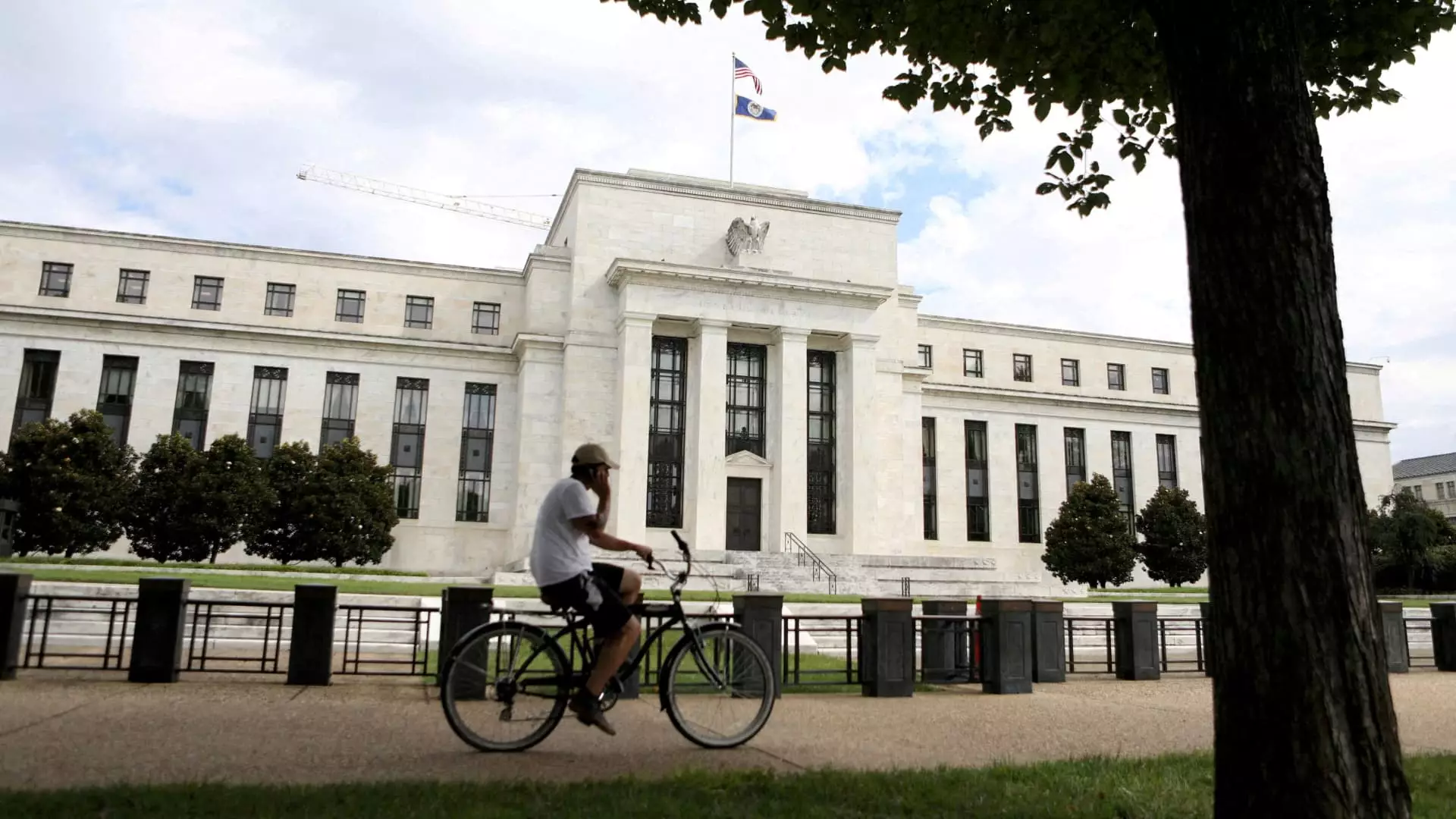In a world where economic stability often hangs in the balance, the Federal Reserve remains a bastion of relative independence, navigating through the swirling winds of political influence. Recently, a surprisingly robust jobs report combined with ongoing inflationary pressures has placed the Fed in a precarious position as it approaches the end of its two-day meeting. Intriguingly, former President Donald Trump’s insistence that the Fed should lower interest rates—regardless of rising inflation and the economic ramifications of his own trade policies—illustrates a fundamental misunderstanding of economic dynamics. Autonomy in central banking is not merely a bureaucratic formality; it is essential for maintaining trust in both the economy and the financial systems that underpin it.
The Fed’s chairperson, Jerome Powell, has reiterated time and again that monetary policy must operate free from the grips of political dictation. This independence is crucial not just for the stakeholders within the financial markets, but for the average consumer. Influencing the Fed through motivational rhetoric, as Trump has attempted, could generate short-term perceptions of relief but could ultimately lead to long-term detrimental consequences. Interest rates must be decided based on hard data and prevailing economic conditions rather than whims or personal grievances.
Trade Wars: The Unseen Weight on Consumers
While consumers often feel the immediate sting of inflation through rising prices, less visible are the broader implications of trade wars that drag on household budgets. New tariffs can lead to cascading effects, sparking a chain reaction that inflates prices on everyday goods. The economic theory suggests that such tariffs protect domestic jobs, but the reality is that it’s the consumers who often bear the financial brunt of these policies. Notably, Eugenio Aleman, chief economist at Raymond James, highlights the tragic irony that everyday consumers usually pay for decisions made at the highest levels of government.
The statistics echo the sentiment; with average annual credit card interest rates hovering just above 20% this year, Americans face a daunting challenge. The financial ecosystem is plagued by uncertainty as banks tighten lending standards, which further exacerbates the plight of consumers. When banks become cautious, one of their common preventative measures is to raise interest rates, compounding problems for those already grappling with rising credit card debt.
Home Buying in a Stagnant Economy
House hunting has become a battleground for many young Americans, as they contend not just with inflated home prices but also with interest rates that refuse to budge significantly. Current nationwide trends showcase a 30-year fixed-rate mortgage settling at around 6.81%. While it’s a slight improvement from earlier in the year, this change is not nearly enough to catalyze an active resurgence in the housing market.
As Matt Schulz, chief credit analyst at LendingTree, observes, potential home buyers are not getting the reprieve they hope for. Speculative interests in the housing market—exacerbated by high prices and unpredictable rates—make it more challenging to envision home ownership as a reality for many aspiring buyers. The pursuit of affordable housing is increasingly slipping further out of reach, especially for low- and middle-income families who feel the grueling squeeze of debt alongside inflation.
The Debt Economy: A Clarion Call for Change
Credit card debt remains an ever-looming specter for the average consumer. Understanding the intricate connection between the Federal Reserve’s policies and everyday borrowing costs is critical. With consumer debt accumulating to staggering levels and average balances hitting record highs, we must question whether this is sustainable. The reality is that everyday Americans are caught in a cycle that balances economic growth against personal financial catastrophe.
As auto loan rates hover around 7.33% and prices of vehicles increase—thanks in part to Trump’s tariffs—the dream of owning a car can feel like an impossible aspiration. It’s a sobering reality, as markets adjust to unyielding economic pressures. If nothing changes, young people and families may become trapped in a society that favors consumption but punishes them with untenable debt obligations.
Finding Stability Amid Uncertainty
In these turbulent times, individuals may seek ways to safeguard their financial futures. While traditional avenues such as high-yield savings accounts are promising, offering returns upwards of 4.5%, they provide only a temporary sense of security. The broader question remains: Will government policies permit space for real change?
For many, the pathway to financial health lies not only in transit plans but also in fostering a culture of savings and prudent financial practices. In an increasingly divided political environment, the call for a sensible approach towards monetary policy has never been more crucial. Consumer finances may hinge on the Fed’s decisions, but proactive measures toward savings and debt elimination can empower individuals to navigate uncertainty with a degree of autonomy.

